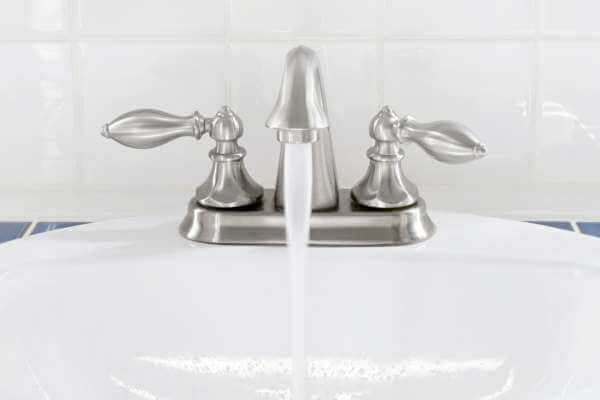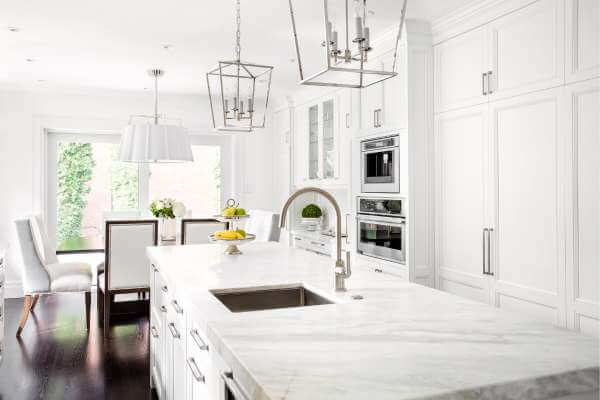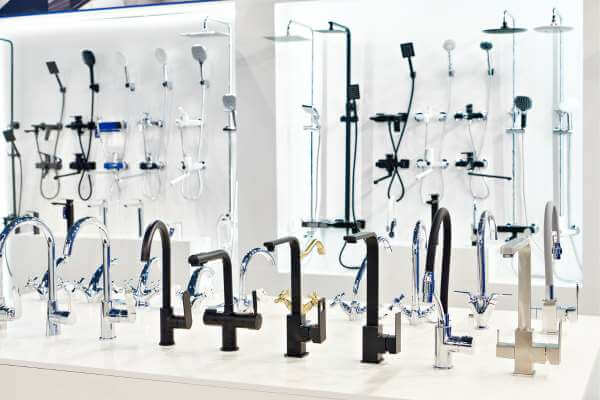If you are looking for a metal finish that can add some style and elegance to your home, you might be wondering whether to choose satin nickel or brushed nickel. Both of these finishes are made from nickel plating over a base metal, such as brass or steel, and they have a similar silver-gray color. However, they also have some distinct differences that can affect their appearance, durability, cost, and maintenance. In this article, we will compare and contrast satin nickel vs brushed nickel, and help you decide which one is right for you.
Appearance
One of the main differences between satin nickel and brushed nickel is its texture and shine. Satin nickel has a smooth and glossy surface, thanks to a lacquer coating that is applied over the nickel plating. This gives it a uniform and non-reflective look, which can create a sleek and polished impression. Brushed nickel, on the other hand, has a rougher and matte surface, due to the use of a wire brush that creates fine lines and grooves on the nickel plating. This gives it a more textured and rustic look, which can add some character and depth to your space.
Depending on your personal preference and the style of your home, you might prefer one finish over the other. If you want a more modern and minimalist look, satin nickel might be a better choice for you. But if you want a more vintage and industrial feel, brushed nickel could be a perfect option.
Durability
Another factor to consider when choosing between satin nickel and brushed nickel is their durability and resistance to wear and tear. Both finishes are fairly durable and can last for a long time, but they also have some pros and cons. Satin nickel has a thicker layer of nickel plating, which makes it more resistant to corrosion and tarnishing. However, it also has a thinner layer of lacquer coating, which can scratch and chip easily, exposing the underlying metal. Brushed nickel has a thinner layer of nickel plating, which makes it more prone to corrosion and tarnishing. However, it also has a thicker layer of lacquer coating, which can protect it from scratches and chips, and hide any imperfections on the surface.
Therefore, if you want a finish that can withstand moisture and humidity, satin nickel might be a better choice for you. But if you want a finish that can withstand abrasion and damage, brushed nickel could be a better option.
Cost
Another aspect to consider when choosing between satin nickel and brushed nickel is their cost and availability. Both finishes are relatively affordable and widely available, but they also have some differences. Satin nickel is usually more expensive than brushed nickel because it requires more nickel plating and a more complex manufacturing process. However, it also has a more consistent and standardized look, which can make it easier to match and coordinate with other fixtures and accessories. Brushed nickel is usually cheaper than satin nickel because it requires less nickel plating and a simpler manufacturing process. However, it also has a more varied and unique look, which can make it harder to match and coordinate with other fixtures and accessories.
Therefore, if you want a finish that can fit your budget and your style, you might want to compare the prices and the quality of different brands and products before making your decision.
Maintenance
The last thing to consider when choosing between satin nickel and brushed nickel is their maintenance and upkeep. Both finishes are relatively easy to maintain and clean, but they also have some differences. Satin nickel is easier to keep clean and shiny because it has a smooth and non-porous surface that does not attract dirt and dust. However, it also shows fingerprints and water spots more easily, which can make it look dull and dirty. Brushed nickel is harder to keep clean and shiny because it has a rough and porous surface that can trap dirt and dust. However, it also hides fingerprints and water spots more easily, which can make it look more natural and aged.
Therefore, if you want a finish that can save you time and effort, satin nickel might be a better choice for you. But if you want a finish that can age gracefully and authentically, brushed nickel could be a better option.
Best Uses for Satin Nickel:

- Bathroom fixtures
- Cabinet hardware
- Light fixtures
- Door handles and knobs
Best Uses for Brushed Nickel:

- Kitchen faucets
- Drawer pulls and handles
- Shower heads and fixtures
- Towel bars and hooks
FAQ about Satin Nickel vs Brushed Nickel
Does satin nickel rust?
Satin nickel bar pulls exhibit excellent resistance against corrosion and wear, yet they can gradually dull and tarnish over time. Applying lacquer to the hardware is crucial as it helps to delay this process. In your kitchen, where durability is paramount, investing in high-quality hardware is essential to ensure longevity and maintain a polished appearance.
Is brushed nickel out of style in 2024?
Brushed nickel is not out of style in 2024. It remains a popular choice for hardware and fixtures in contemporary interior design
Does satin nickel look like stainless steel?
Brushed nickel boasts a warmer color tone, while stainless steel falls somewhere in between the warmth of brushed nickel and the coolness of stainless steel. Typically, stainless steel features a brushed or satin finish, similar to brushed nickel. Among these metal finishes, stainless steel stands out as the only type that can maintain a solid composition throughout.
Conclusion of Satin Nickel vs Brushed Nickel
Satin nickel and brushed nickel are both popular and versatile finishes that can enhance the look and feel of your home. However, they also have some differences that can affect their appearance, durability, cost, and maintenance. Depending on your personal preference and the style of your home, you might prefer one finish over the other. To help you make the best decision, here are some tips and recommendations:
- Use satin nickel for a smooth and glossy look, and brushed nickel for a rough and matte look.
- Use satin nickel for a modern and minimalist style, and brushed nickel for a vintage and industrial style.
- Use satin nickel for a moisture-resistant and corrosion-resistant finish, and brushed nickel for an abrasion-resistant and damage-resistant finish.
- Use satin nickel for a more expensive and standardized finish, and brushed nickel for a cheaper and unique finish.
- Use satin nickel for an easy-to-clean and shiny finish, and brushed nickel for a hard-to-clean and aged finish.
We hope this article has helped you understand the differences between satin nickel and brushed nickel, and how to choose the best one for you. If you have any questions or comments, please feel free to share them below. Thank you for reading!


 Hi, my name is Debra Klein and I love modern kitchen designs! As a product reviewer, it’s my mission to help homeowners choose the right modern kitchen accessories for their homes. I want to give them the best solution possible so they can make the best decision for their needs. Thanks for reading!
Hi, my name is Debra Klein and I love modern kitchen designs! As a product reviewer, it’s my mission to help homeowners choose the right modern kitchen accessories for their homes. I want to give them the best solution possible so they can make the best decision for their needs. Thanks for reading!



